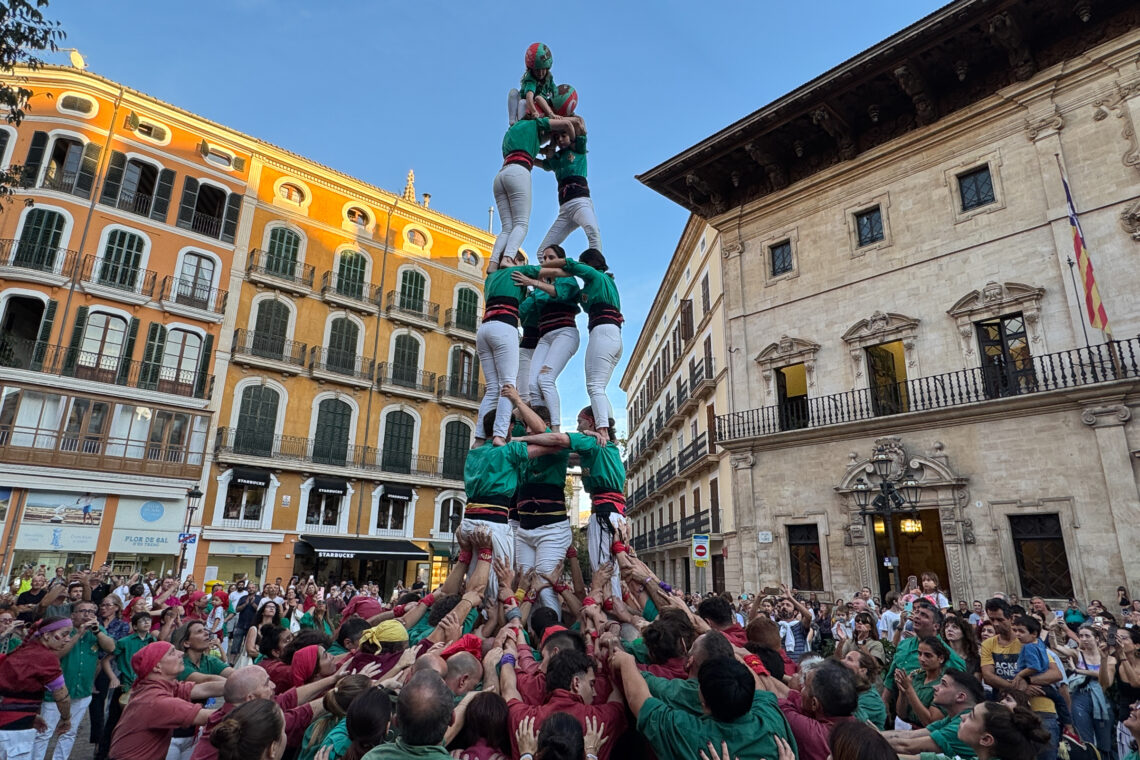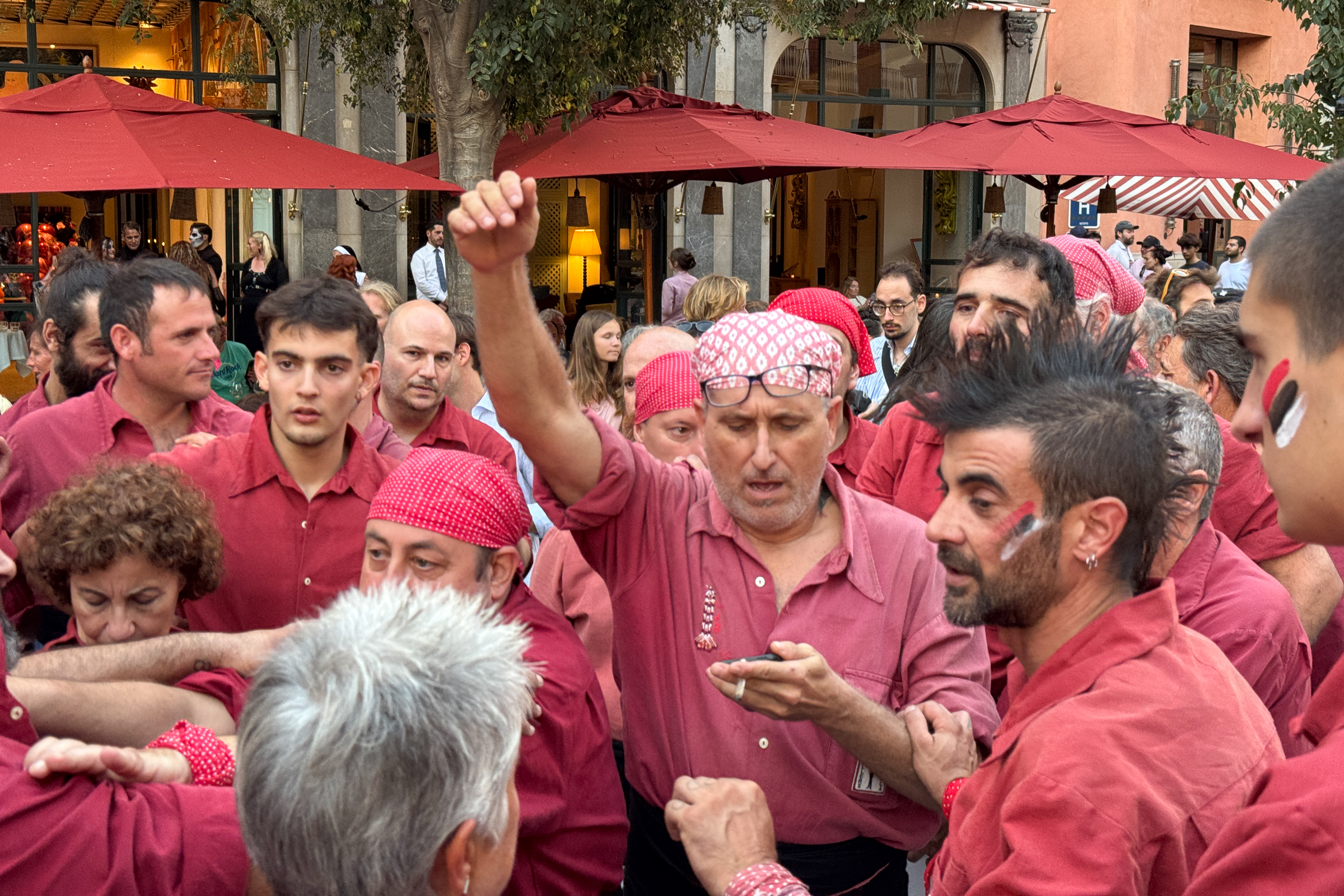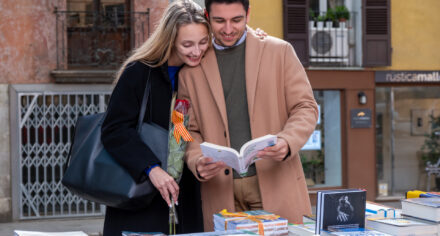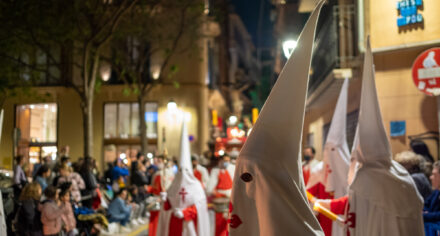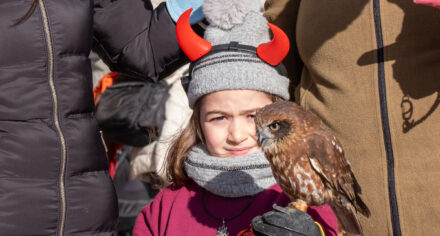The crowd on Plaça de Cort holds its breath. Eyes tilt upward, tracking every movement as layers of human bodies rise toward the bright sky. Even the musicians, their flutes and drum setting the rhythm of tradition, glance up. It’s the 25a Diada of the Castellers de Mallorca, and the square in the heart of Palma pulses with anticipation. On the cobblestones strong arms interlock, backs brace, and a living tower begins to grow, person by person, towards impossible balance.
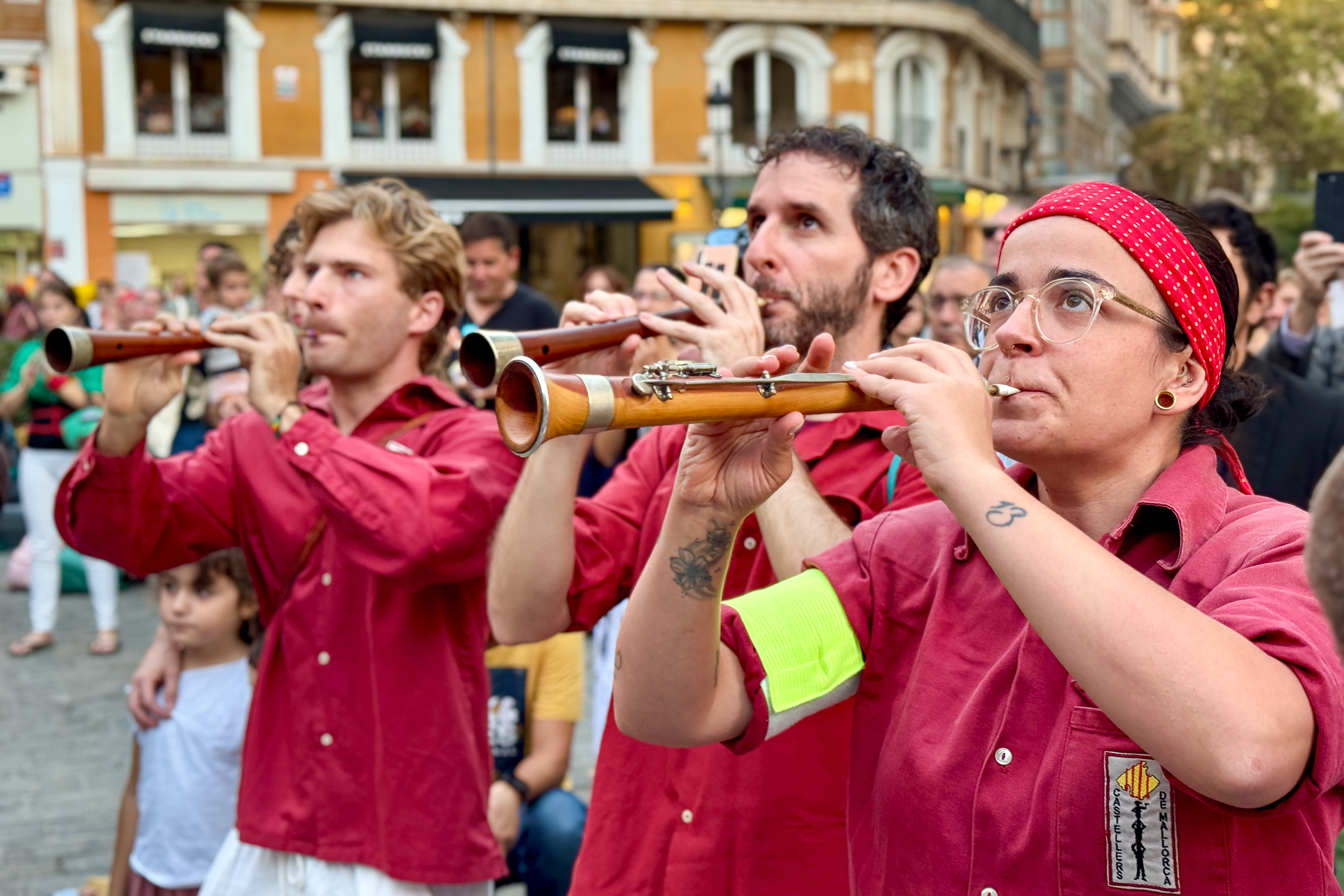
The Moment of Balance
Suddenly, a tremble runs through the upper tiers. A murmur sweeps the crowd, noticing the ripple. For a heartbeat, time freezes. A child, the enxaneta, climbs carefully toward the summit, the small feet pressing on shoulders and confidence. Sharp commands cut through the tension, bringing calm, strength, unity. The tower steadies. And then success. The enxaneta raises one hand high, completing the human spire. Applause erupts like a wave, tears glisten, and the sound of joy fills the square. It’s not just a performance; it’s a moment of collective triumph.
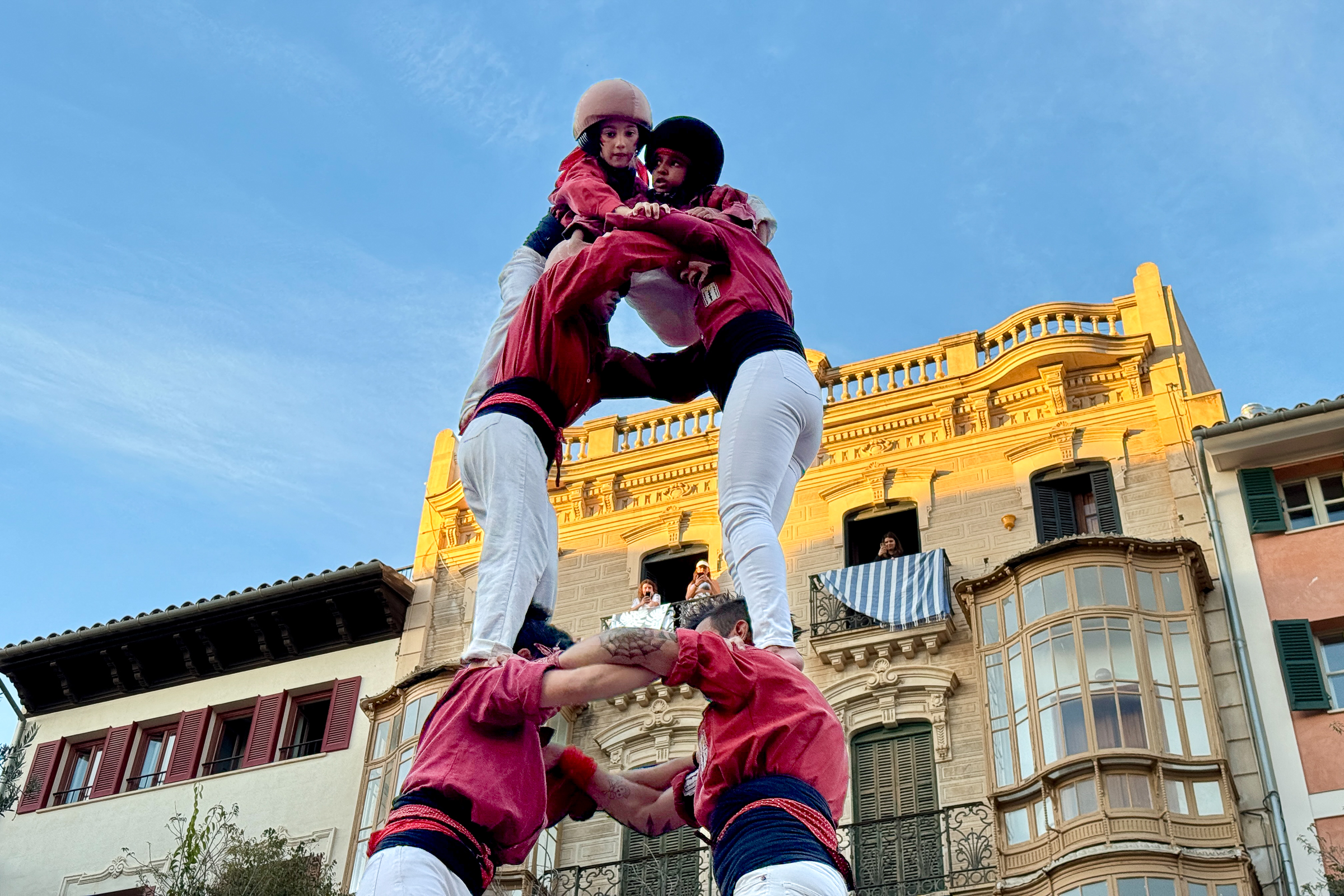
Strength in Unity
This tradition has been at the heart of Catalan culture for over two centuries. The human towers (castells) symbolize strength, agility, unity, and mutual support. They are more than spectacle, they are heritage. Even declared Intangible Cultural Heritage of Humanity by UNESCO in 2010. These living structures remind us that greatness depends not on one, but on all. Each casteller plays a specific role. From the base called the pinya to the child at the peak, every grip, every step, every breath speaks of trust.
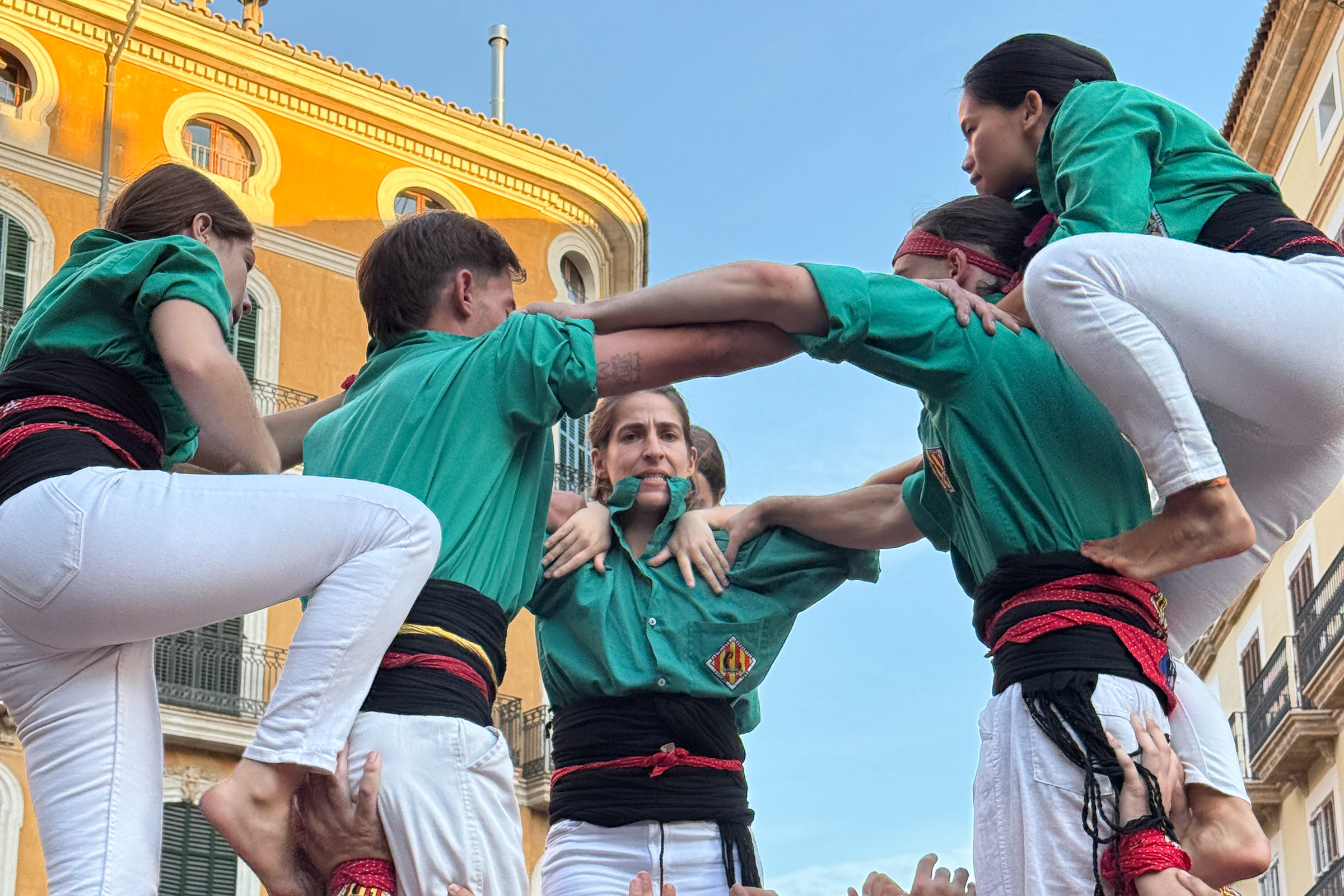
25a Diada
This year’s 25a Diada in Palma gathered not only the local heroes. The Allots de Llevant from Manacor, and the Castellers de Cerdanyola from Vallès joined the Castellers de Mallorca. Together, they filled the square with energy, and laughter. Each group built its own castles, some tall, some intricate, all unforgettable. The atmosphere was charged with mutual support and admiration.
The Anatomy of a Tower
Before a tower rises, the cap de colla assigns every role. The pinya forms, a dense base of intertwined arms and locked shoulders. Each person knows their place. The tronc, the folre and the manilles build and reinforce the structure for the tallest towers. Every castell is an equation of balance and trust.
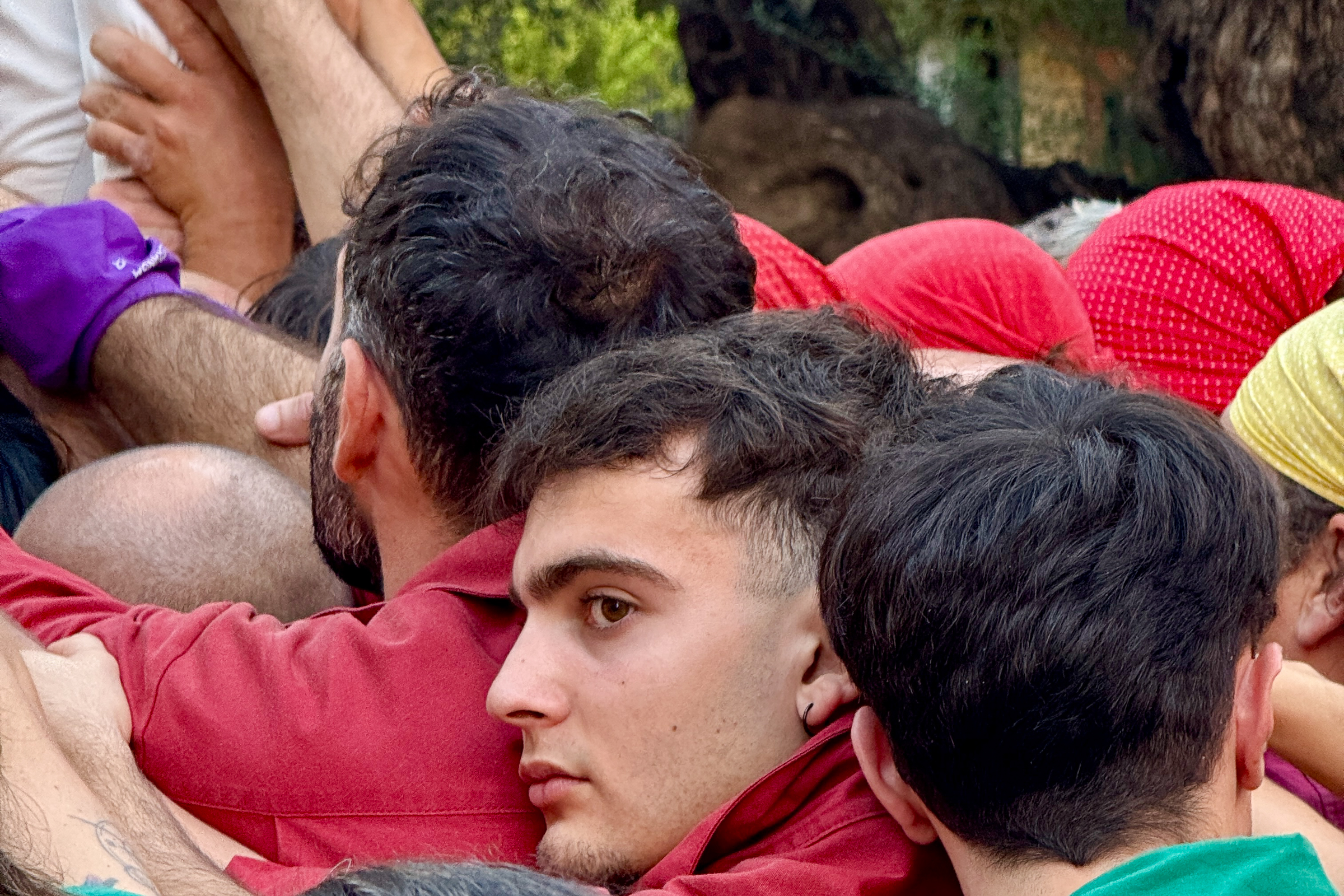
The Language of Castells
The human pyramids are named according to their structure using two digits. The first digit refers to the number of castellers per level, the second to the number of levels. A 2de6 for instance, or a 4de6. The towers built with only one person per tier are called pilars.
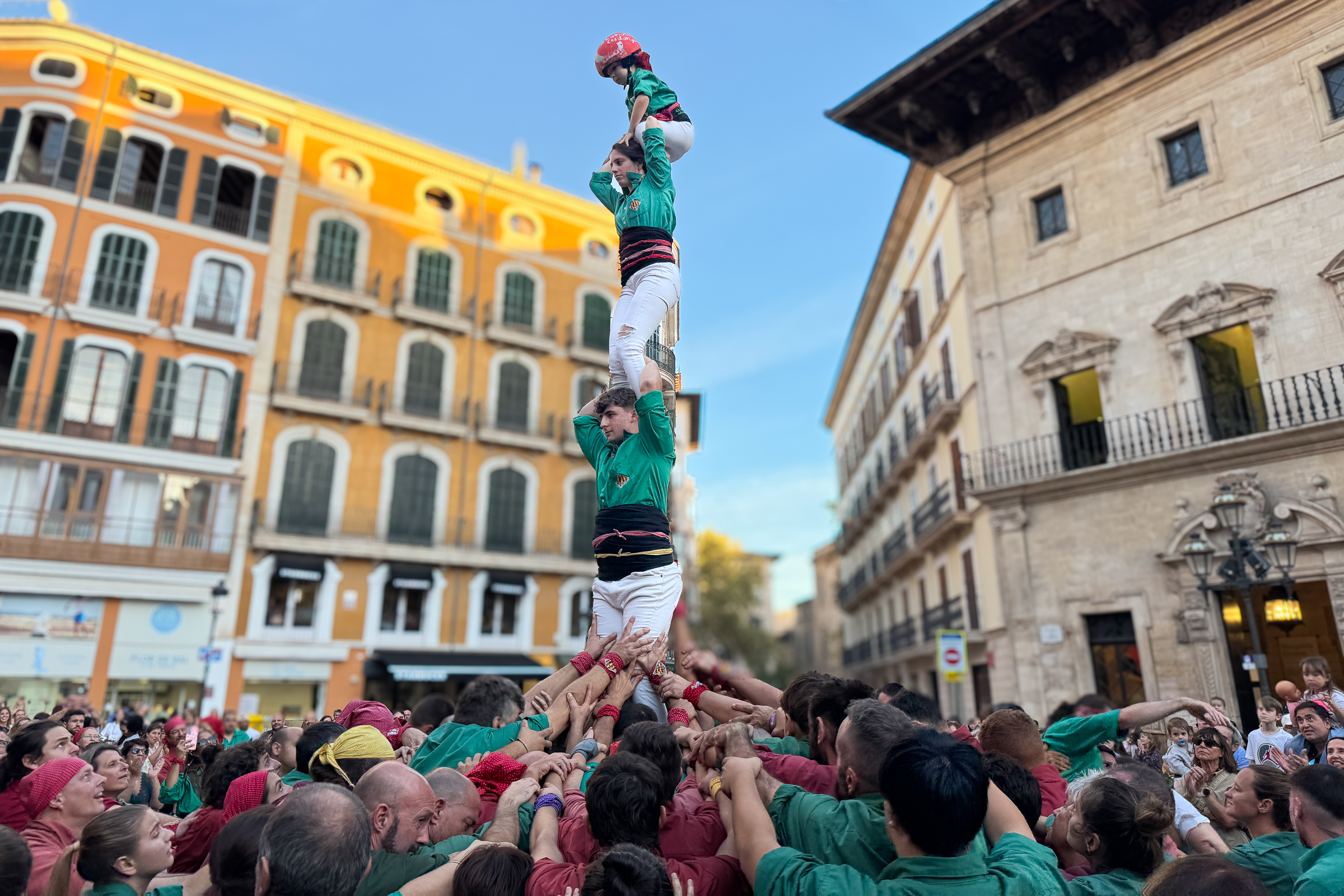
From Effort to Celebration
As dusk settles over Palma, the towers give way to music and dance. What began as a display of discipline and strength turns into a night of joy. A reminder that here, in the heart of the Balearic Islands, community still stands tall. ![]()
Read more about castles on Mallorca that are made of stone, here.

